County-Rural Transformation Development from Viewpoint of “Population-Land-Industry” in Beijing-Tianjin-Hebei Region under the Background of Rapid Urbanization
Abstract
:1. Introduction
2. Methods and Materials
2.1. Study Area
2.2. Data and Methods
3. Results
3.1. Coordination Degree
3.2. Transformation Degree
3.3. Rural Transformation—Coordination Development
4. Discussions
4.1. Mechanism of Population–Land–Industry to Rural Transformation
4.2. Functional Regionalization of Rural Transformation Development
5. Conclusions
Acknowledgments
Author Contributions
Conflicts of Interest
References
- Nyberg, A.; Rozelle, S. Accelerating China’s rural transformation. In Accelerating Chinas Rural Transformation; World Bank Publications: Washington, DC, USA, 1999; pp. 13–18. [Google Scholar]
- Long, C.Y. The Mechanisms of Cropland Conservation in Chinese Rural Transformation. Sci. Geogr. Sin. 2001, 187, 91–103. [Google Scholar]
- Keith, B. From proletarian to peasant: Rural transformation in the state of Acre, 1870–1986. J. Dev. Stud. 2007, 24, 141–160. [Google Scholar]
- Abam, F. Developing the Biofuel Industry for Effective Rural Transformation in Nigeria. Eur. J. Sci. Res. 2010, 40, 441–449. [Google Scholar]
- Desai, S.; Vashishtha, P.; Joshi, O. Mahatma Gandhi National Rural Employment Guarantee Act: A Catalyst for Rural Transformation; National Council of Applied Economic Research: New Delhi, India, 2015. [Google Scholar]
- Julie, C. Concentration and decentralization: The new geography of freight distribution in US metropolitan areas. J. Transp. Geogr. 2010, 18, 363–371. [Google Scholar]
- Li, T.T.; Long, H.L. Rural development from viewpoints of transformation and coordination: A case in Shandong Province. Prog. Geogr. 2014, 33, 531–541. [Google Scholar]
- Liu, Y.S.; Yang, R. The spatial pattern measure of urban-rural development transformation in the Bohai Rim region in China. Acta Geogr. Sin. 2015, 70, 248–256. [Google Scholar]
- Long, H.L. Land use transition and rural transformation development. Prog. Geogr. 2012, 31, 131–138. [Google Scholar]
- Li, F.R.; Wang, Y.S.; Hu, Y.L.; Yao, X. Research on Yancheng Coastal Beach Reclamation Development and Ecological Environment Protection. J. Green Sci. Technol. 2013, 9, 155–157. [Google Scholar]
- Liu, Y.S. Integrated land research and land resources engineering. Resour. Sci. 2015, 37, 1–8. [Google Scholar]
- Reddy, A.A.; Rani, C.R.; Cadman, T.; Reddy, T.P.; Battarai, M.; Reddy, A.N. Rural Transformation of a Village in Telangana, a Study of Dokur since 1970s. Int. J. Rural Manag. 2016, 12, 143–178. [Google Scholar] [CrossRef]
- Yang, R.; Liu, Y.S.; Long, H.L. The study on non-agricultural transformation co-evolution characteristics of “population-land-industry”: Case study of the Bohai Rim in China. Geogr. Res. 2015, 49, 972–975. [Google Scholar]
- Liu, Y.S.; Long, H.L.; Chen, Y.F.; Wang, J.Y.; Li, Y.R.; Li, Y.H.; Yang, Y.Y.; Zhou, Y. Progress of research on urban-rural transformation and rural development in China in the past decade and future prospects. J. Geogr. Sci. 2016, 26, 1117–1132. [Google Scholar] [CrossRef]
- Fichera, C.R.; Modica, G.; Pollino, M. GIS and Remote Sensing to Study Urban-Rural Transformation during a Fifty-Year Period. In Proceedings of the International Conference on Computational Science and its Applications, Santander, Spain, 20–23 June 2011; Springer: Berlin, Germany, 2011; pp. 237–252. [Google Scholar]
- Hu, Z.C.; Wang, Y.L.; Liu, Y.S.; Long, H.L.; Peng, J. Spatio-Temporal Patterns of Urban-Rural Development and Transformation in East of the “Hu Huanyong Line”, China. ISPRS Int. J. Geo-Inf. 2016, 5, 24. [Google Scholar] [CrossRef]
- Gibson, C. Rural Transformation and Cultural Industries: Popular Music on the New South Wales Far North Coast. Geogr. Res. 2010, 40, 337–356. [Google Scholar] [CrossRef]
- Oleti, G. Effects of internal migration on poverty reduction, income and gender inequality, rural transformation (including urbanization of towns) and agricultural productivity. Appl. Geochem. 2017, 38, 82–91. [Google Scholar]
- Xia, Q.F. Beijing Statistical Yearbook; Beijing Statistics Bureau: Beijing, China, 1990/2000/2010/2015. [Google Scholar]
- Wu, J.D.; Peng, Z.L. Tianjin Statistical Yearbook; Tianjin Statistics Bureau: Tianjin, China, 1990/2000/2010/2015. [Google Scholar]
- Wu, X.H.; Meng, X.Y.; Peng, J.Q. Hebei Economic Yearbook; People’s Government of Hebei Province: Shijiazhuang, China, 1990/2000/2010/2015.
- Zhou, H.; Wang, B.J. Analysis of the coupling rurality index and rural transformation development of Jiangsu province in China in the early 21st century. China Popul. Resour. Environ. 2013, 23, 48–55. [Google Scholar]
- Li, T.T.; Long, H.L. Analysis of rural transformation development from the viewpoint of “population-land-industry”: The case of Shandong Province. Econ. Geogr. 2015, 35, 149–155. [Google Scholar]
- Wang, Y.F.; Liu, Y.S.; Li, Y.H. The Spatial Disparity of Rural Transition Development and Regional Characteristics of Its Driving Forces. Econ. Geogr. 2016, 36, 135–142. [Google Scholar]
- Liu, Y.B.; Li, R.D.; Song, X.F. Analysis of Coupling Degrees of Urbanization and Ecological Environment in China. J. Nat. Resour. 2005, 20, 105–112. [Google Scholar]
- Li, T.T.; Long, H.L. Study on the spatio-temporal pattern of rural transformation development in Shandong province. Geogr. Res. 2014, 33, 490–500. [Google Scholar]
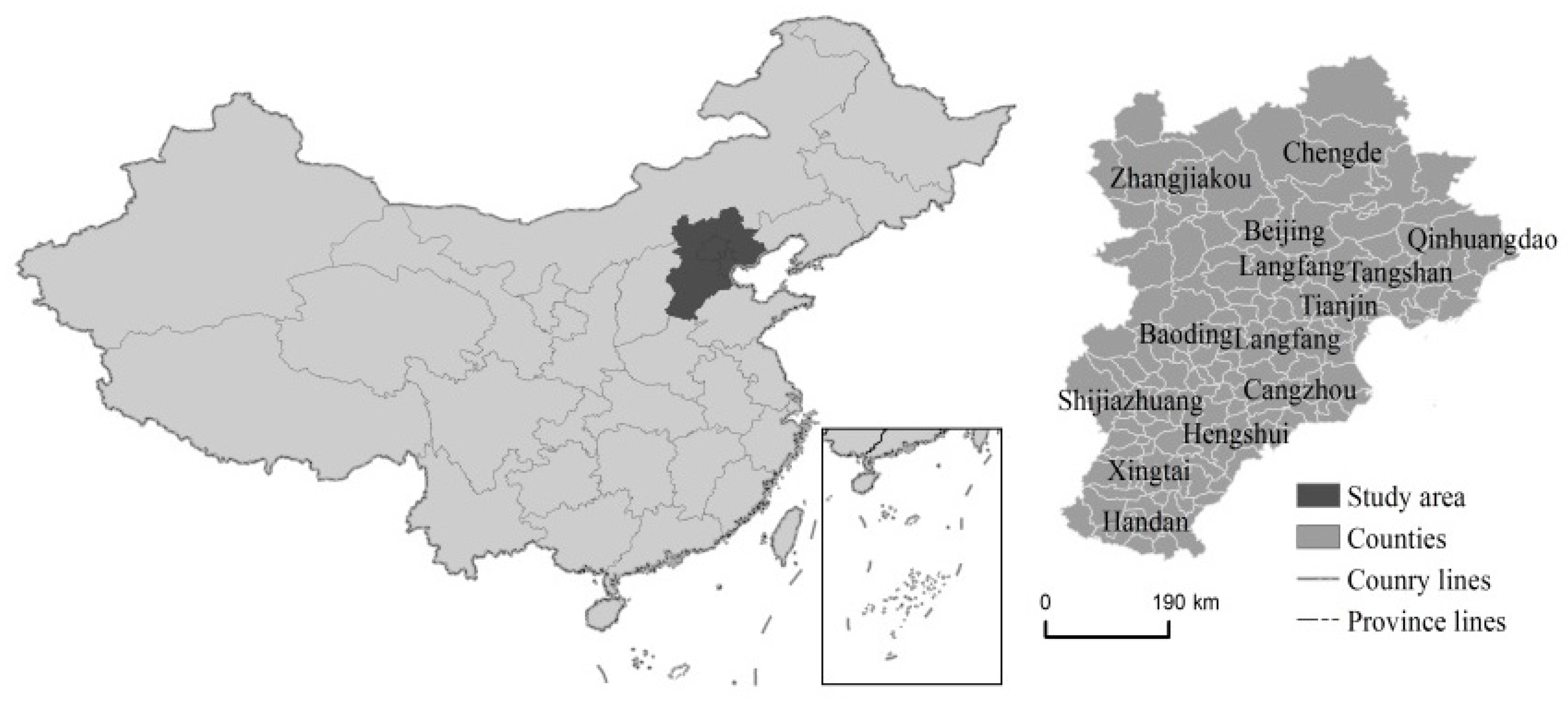

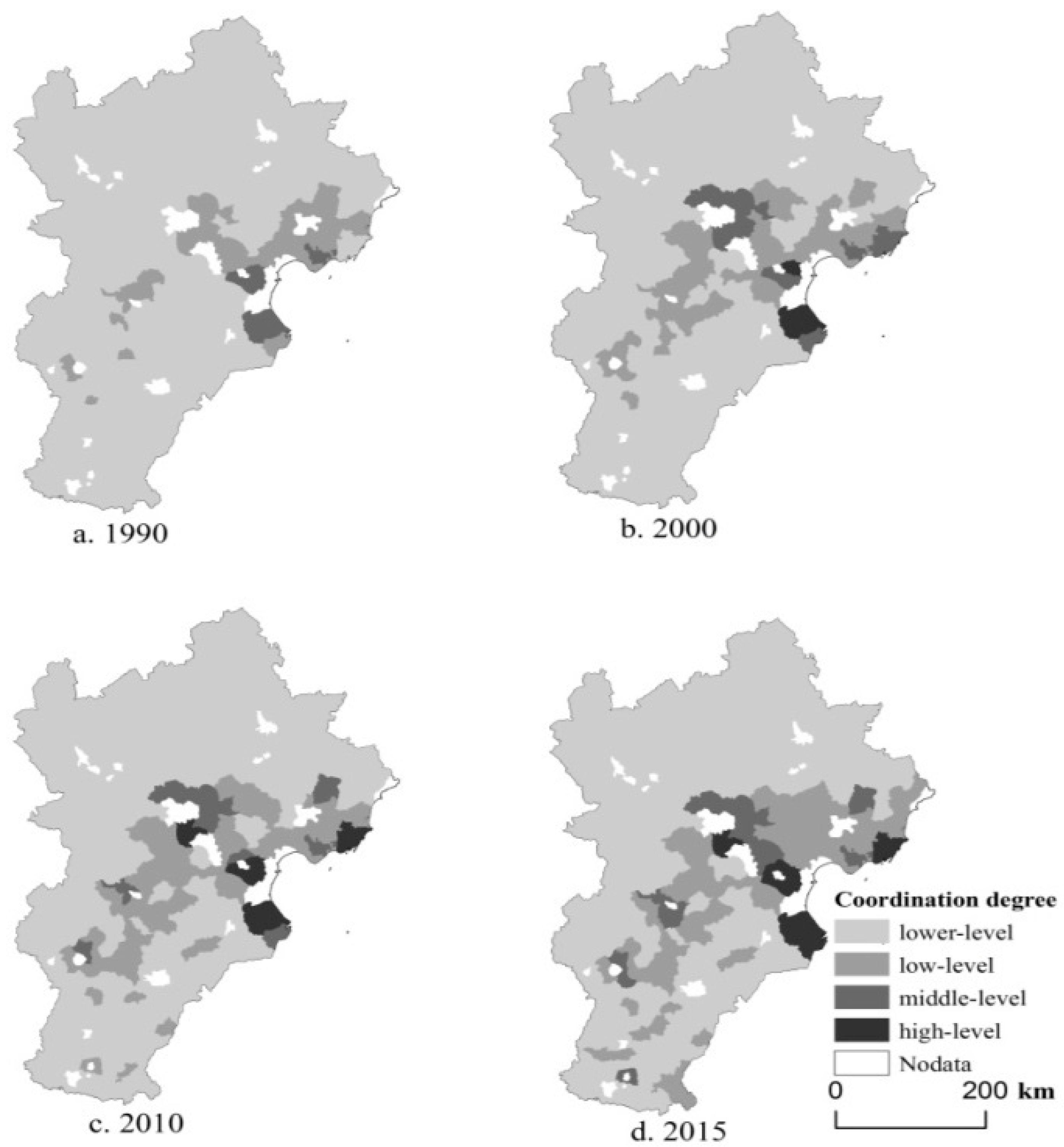
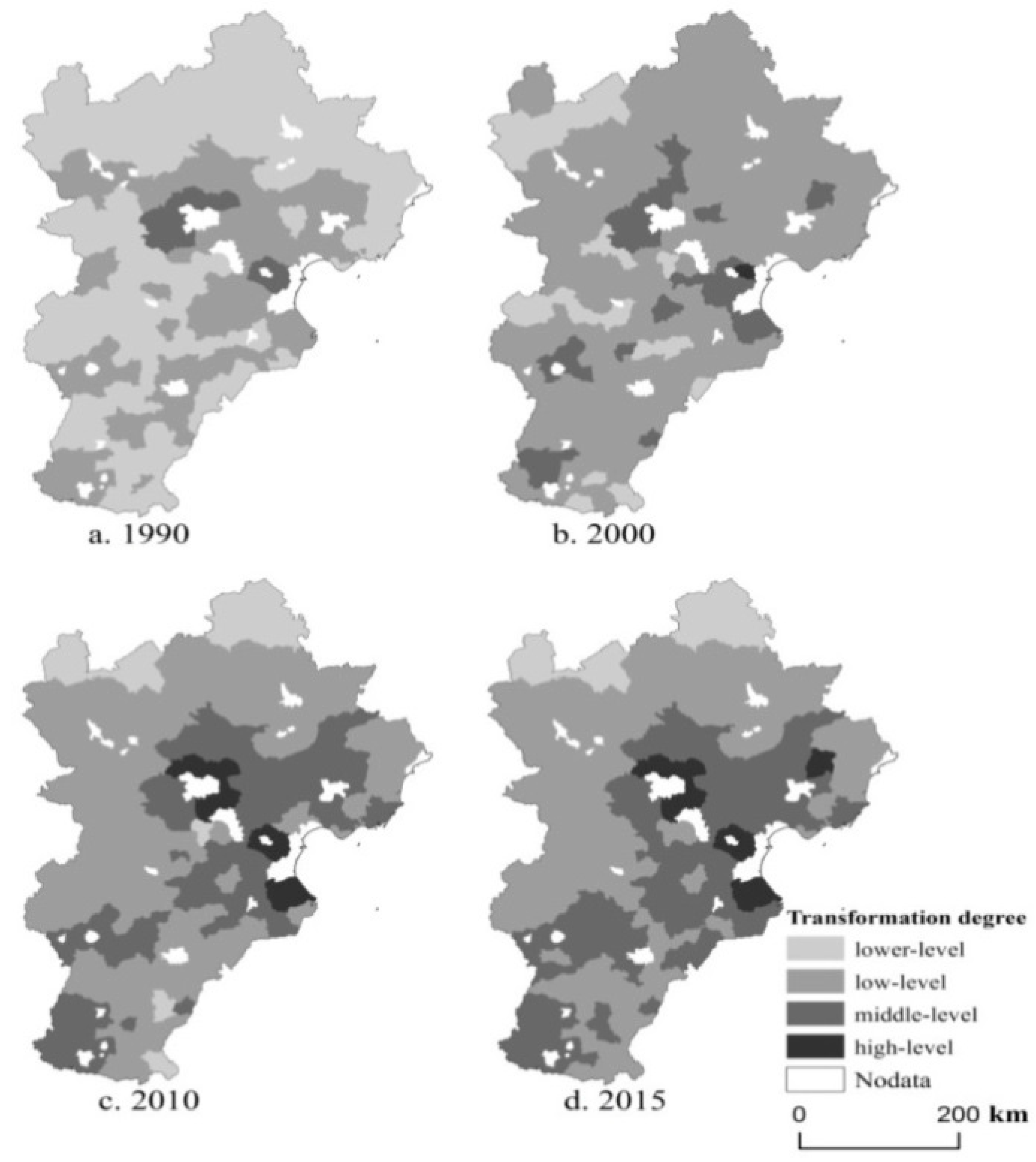
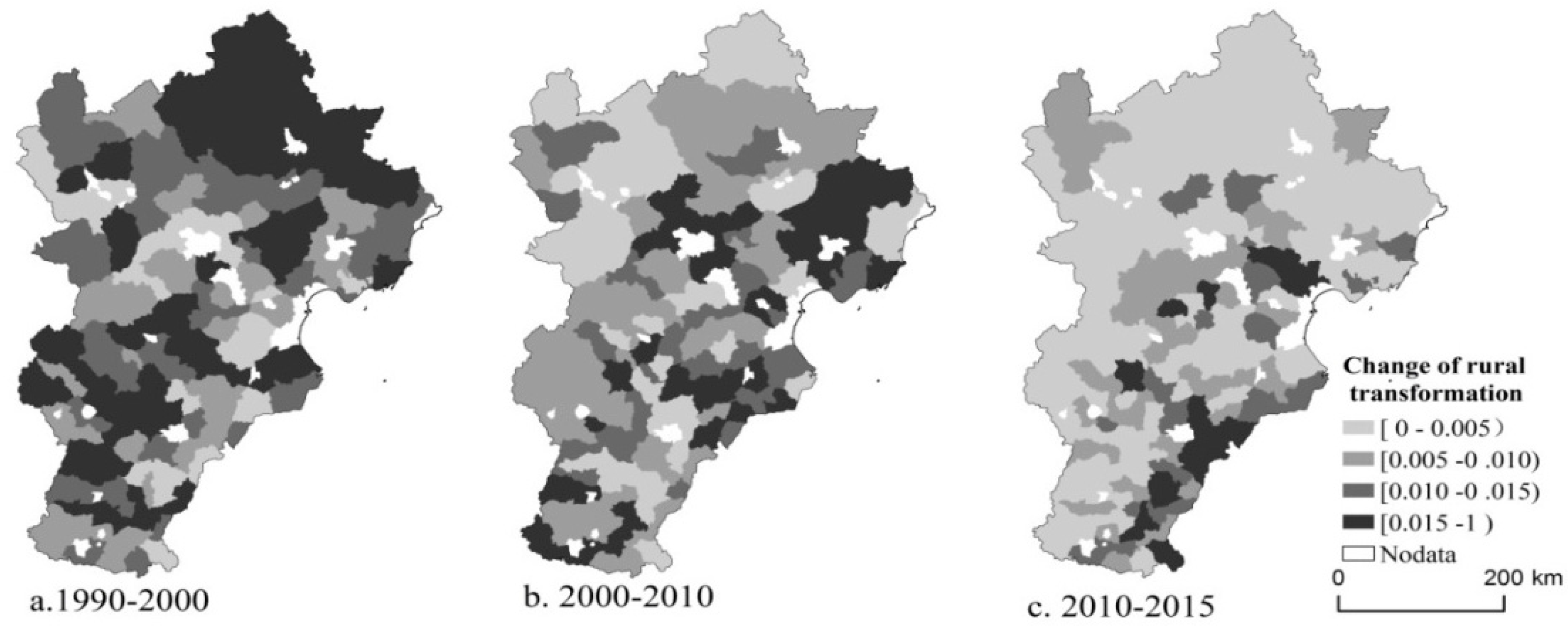
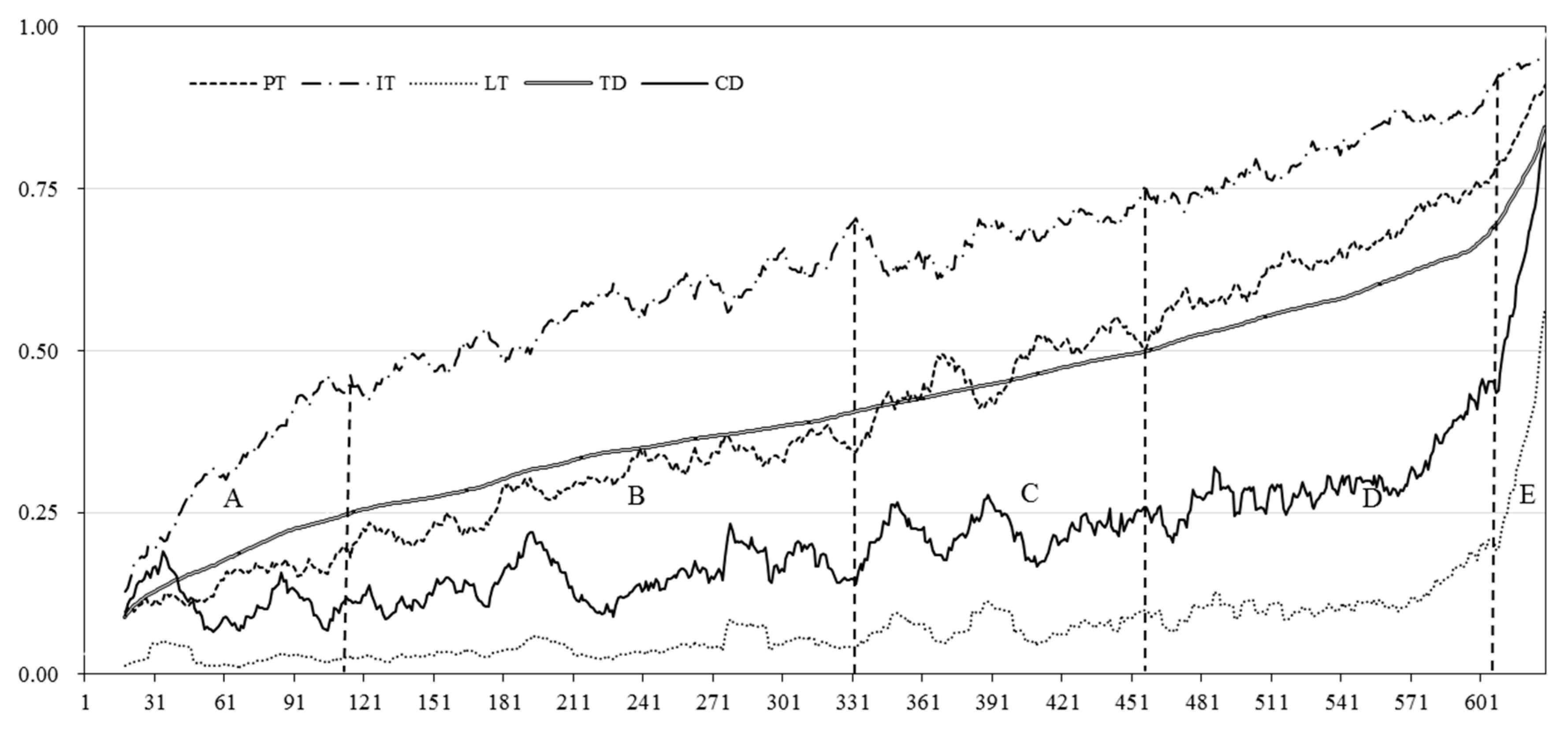
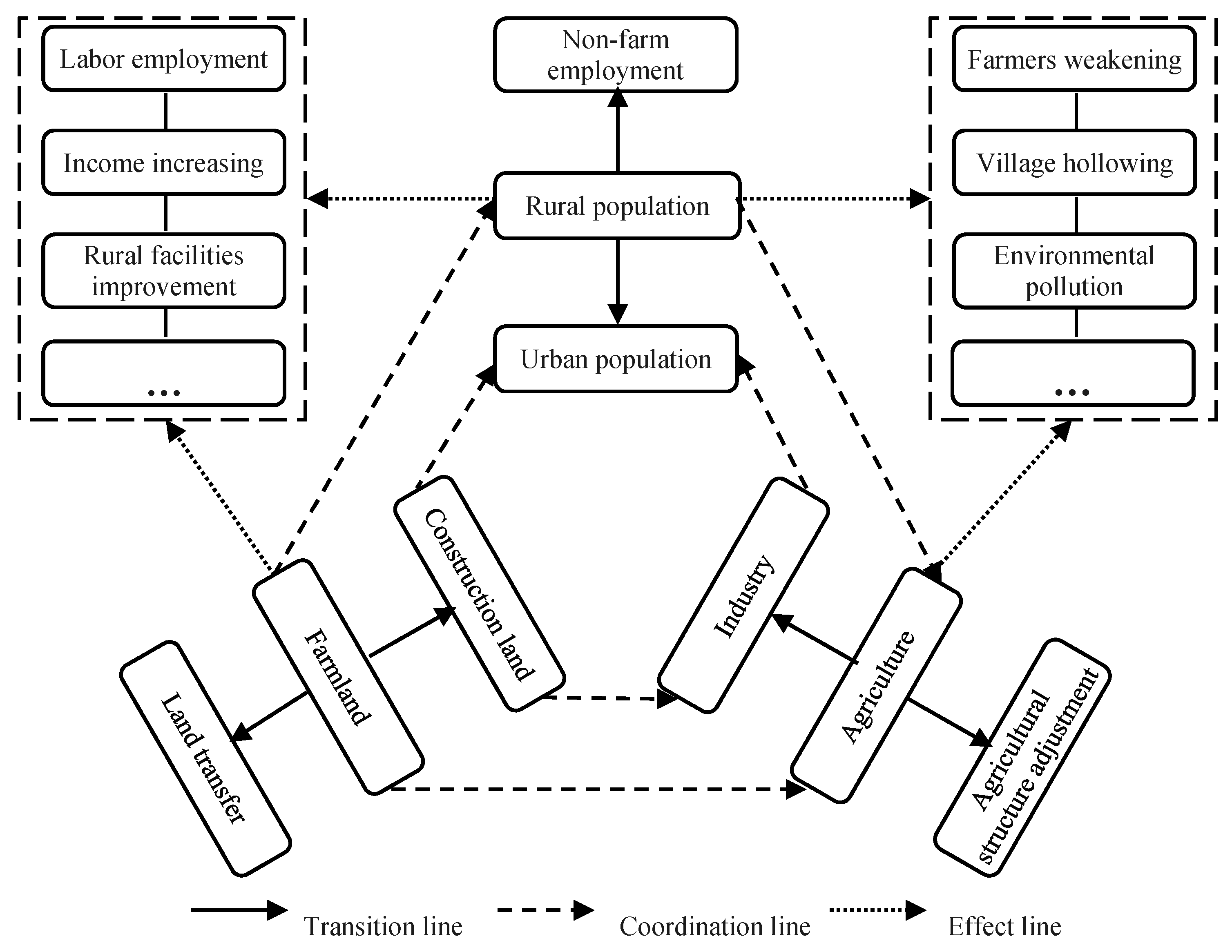
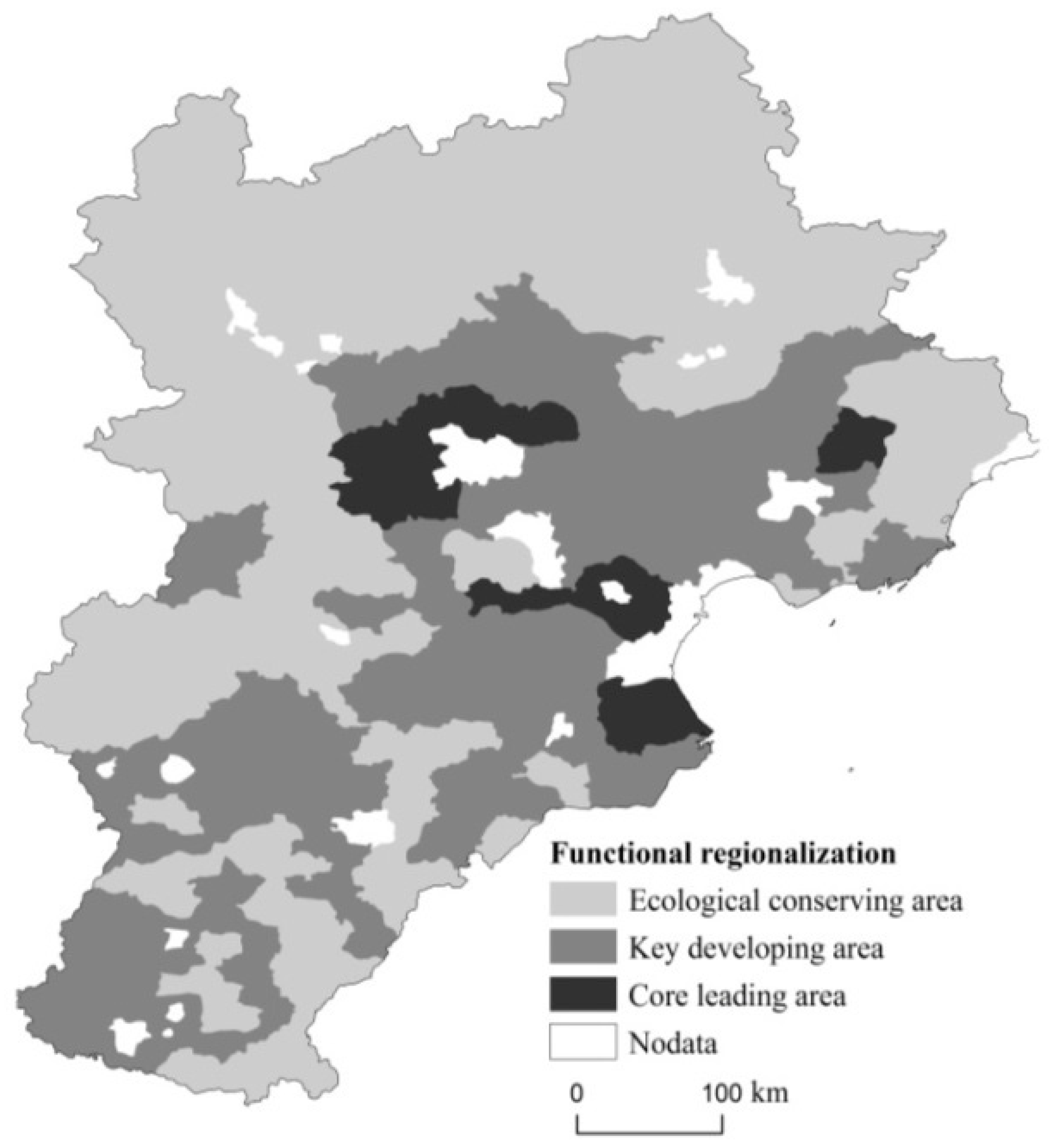
| Criteria Layer | Index Layer | Weights |
|---|---|---|
| Population | The proportion of agricultural labor with non-agricultural employment accounting for the total agricultural labor. | 0.387 |
| Land | The proportion of urban-industrial and mining land accounting for the total land area. | 0.239 |
| Industry | The proportion of non-agricultural output value accounting for gross domestic product. | 0.374 |
© 2017 by the authors. Licensee MDPI, Basel, Switzerland. This article is an open access article distributed under the terms and conditions of the Creative Commons Attribution (CC BY) license (http://creativecommons.org/licenses/by/4.0/).
Share and Cite
Li, J.; Yang, Y.; Jiang, N. County-Rural Transformation Development from Viewpoint of “Population-Land-Industry” in Beijing-Tianjin-Hebei Region under the Background of Rapid Urbanization. Sustainability 2017, 9, 1637. https://doi.org/10.3390/su9091637
Li J, Yang Y, Jiang N. County-Rural Transformation Development from Viewpoint of “Population-Land-Industry” in Beijing-Tianjin-Hebei Region under the Background of Rapid Urbanization. Sustainability. 2017; 9(9):1637. https://doi.org/10.3390/su9091637
Chicago/Turabian StyleLi, Jintao, Yuanyuan Yang, and Ning Jiang. 2017. "County-Rural Transformation Development from Viewpoint of “Population-Land-Industry” in Beijing-Tianjin-Hebei Region under the Background of Rapid Urbanization" Sustainability 9, no. 9: 1637. https://doi.org/10.3390/su9091637




